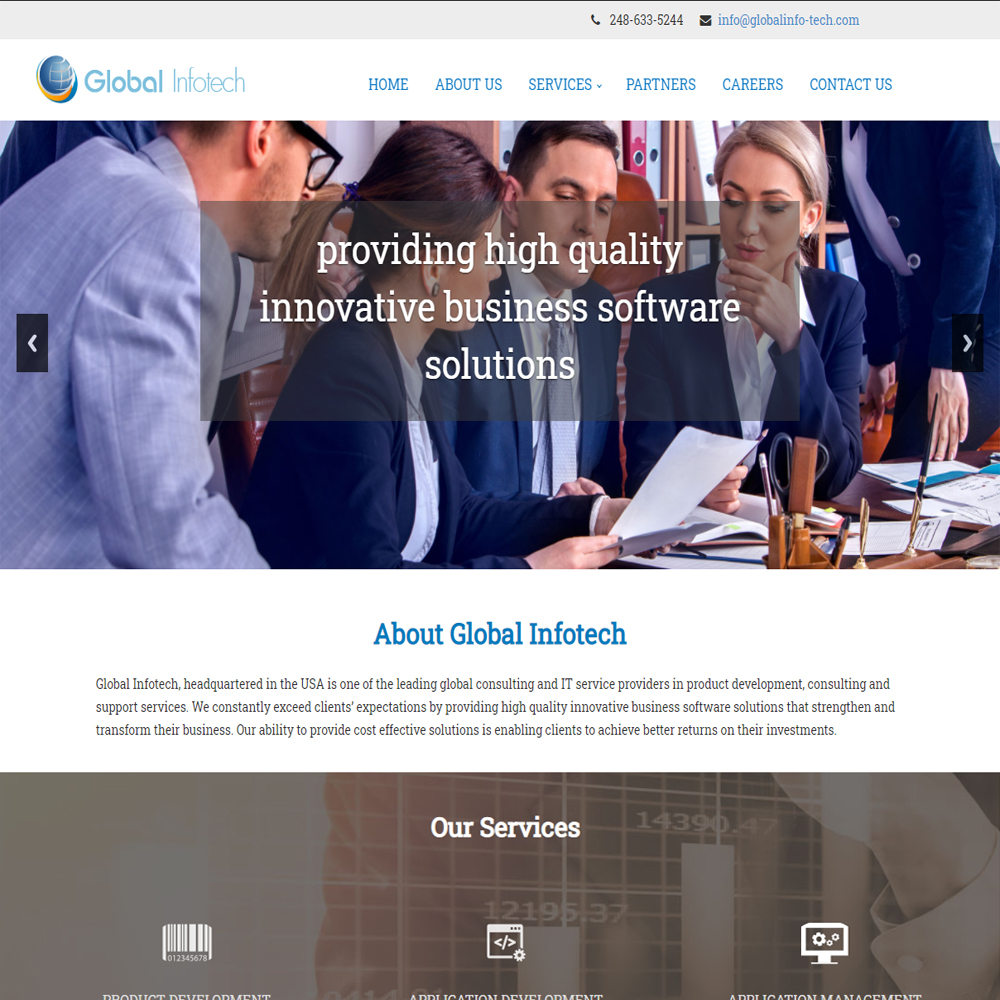1. Initial Planning and Requirements Gathering
- Conduct meetings with the client to understand their needs.
- Define the target audience and website goals.
- Create a detailed list of required features (e.g., contact forms, service pages, etc.).
- Discuss design preferences, brand colors, and overall aesthetic.
- Establish project timeline and budget.
2. Domain and Hosting Setup
- Choose and register a domain name that represents the company’s brand (e.g., www.globalinfotech.com).
- Select a reliable hosting provider (e.g., Bluehost, SiteGround, or WP Engine).
- Set up hosting account and configure DNS settings for the domain.
3. WordPress Installation
- Use the hosting provider’s one-click WordPress installation tool or manually install WordPress.
- Configure basic settings (site title, tagline, and admin user).
4. Theme Selection and Customization
- Choose a premium or free theme suitable for IT consultants (e.g., Astra, Divi, or a custom theme).
- Install and activate the chosen theme.
- Customize the theme using the WordPress Customizer or a page builder (e.g., Elementor, WPBakery).
5. Essential Plugins Installation
- Install and activate essential plugins:
- SEO: Yoast SEO or Rank Math
- Security: Wordfence or Sucuri
- Backup: UpdraftPlus or BackupBuddy
- Contact Forms: WPForms or Contact Form 7
- Analytics: Google Analytics Dashboard for WP (GADWP)
- Performance: W3 Total Cache or WP Super Cache
6. Website Structure and Content Creation
- Create necessary pages (Home, About Us, Services, Blog, Contact, etc.).
- Add content to each page, ensuring it is SEO-optimized.
- Include high-quality images, videos, and graphics as needed.
- Set up a blog section for regular updates and articles.
7. Custom Functionality and Features
- Implement custom forms for lead generation and contact.
- Integrate third-party services (e.g., CRM, email marketing tools).
- Set up client testimonials and case studies sections.
- Add a portfolio section showcasing past projects.
- Configure a live chat feature if required.
8. Testing and Quality Assurance
- Test the website on different browsers (Chrome, Firefox, Safari) and devices (desktop, tablet, mobile).
- Verify all forms, links, and interactive elements work correctly.
- Perform speed and performance tests (using tools like GTmetrix or Google PageSpeed Insights).
- Conduct an SEO audit to ensure the site is search-engine friendly.
9. Client Review and Feedback
- Schedule a review meeting with the client.
- Provide a walkthrough of the website’s features and content.
- Gather feedback and make necessary adjustments based on client input.
10. Launch Preparation
- Perform a final round of testing and quality assurance.
- Set up website analytics and monitoring tools.
- Create a backup of the final website version.
- Plan a launch date with the client.
11. Website Launch
- Switch the website from the staging environment to the live server.
- Announce the website launch via the client’s social media and email newsletter.
- Monitor the website for any immediate issues post-launch.
12. Post-Launch Support and Maintenance
- Offer a maintenance plan covering regular updates, backups, and security checks.
- Provide training to the client on managing and updating the website.
- Be available for troubleshooting and additional feature requests.



